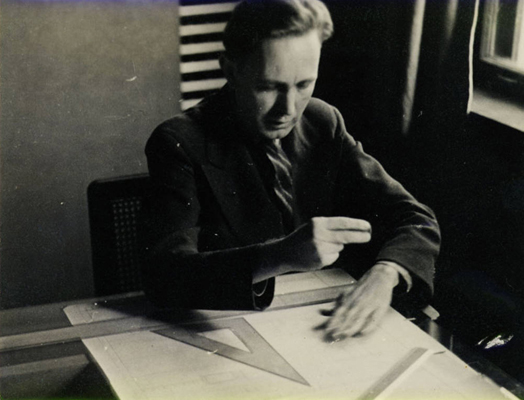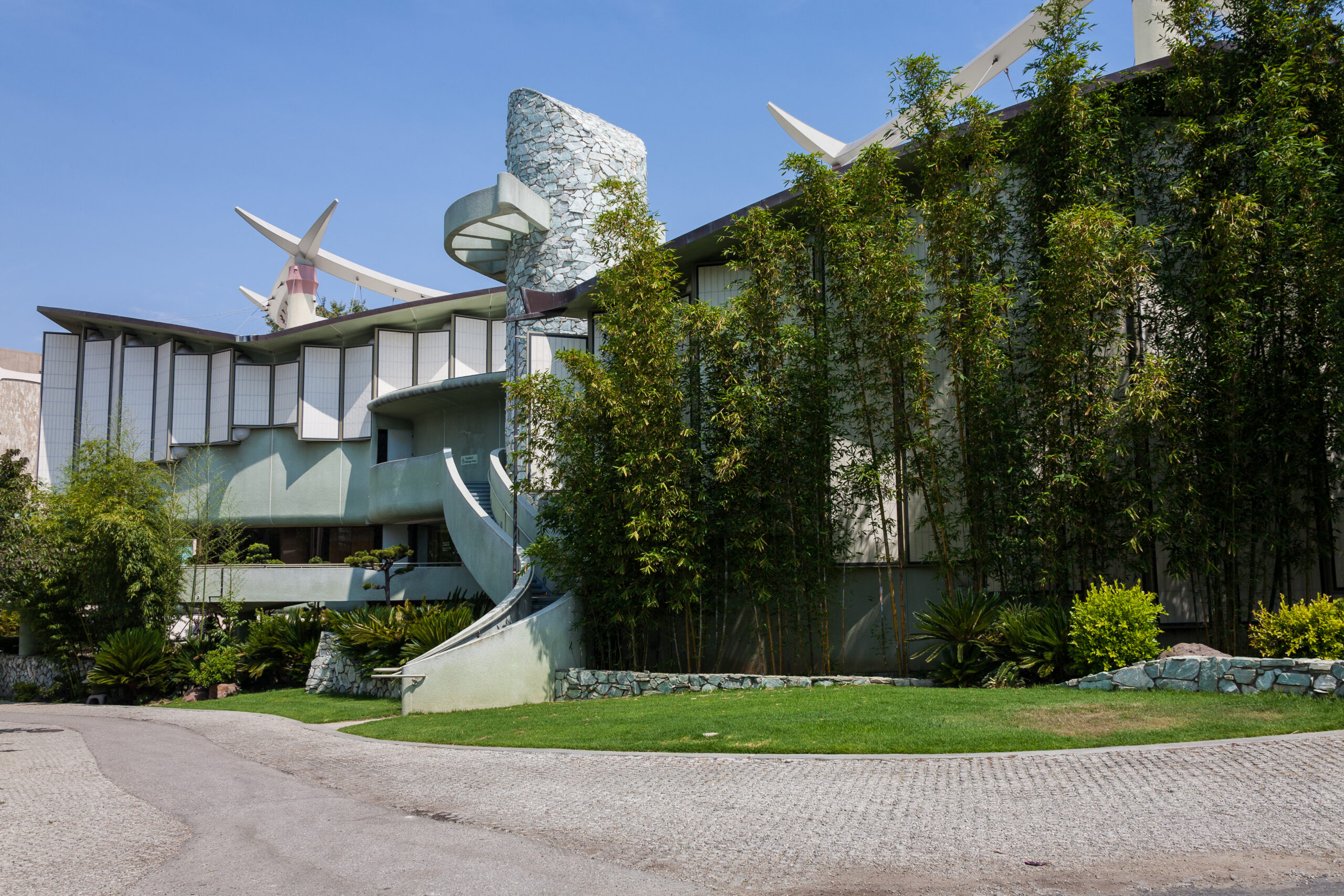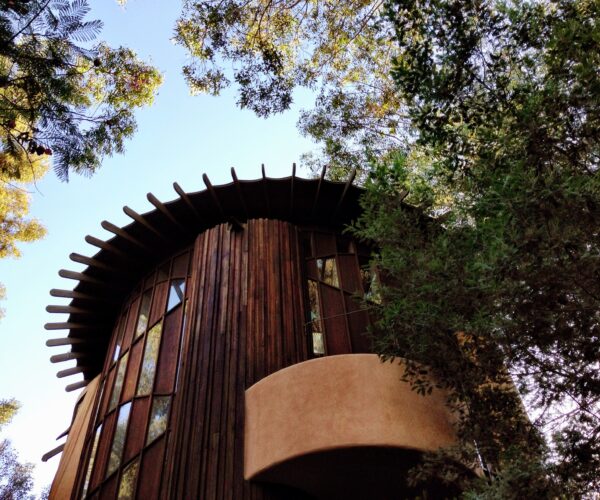Architect
Bruce Goff
Largely self-educated and known for organic, bold, and avant-garde designs, Goff created one-of-a-kind structures uniquely tailored to a client’s personality and lifestyle.

Bruce Goff, c.1930s. Bruce A. Goff Archive, Ryerson and Burnham Libraries, The Art Institute of Chicago. | Bruce Goff, c.1930s. Bruce A. Goff Archive, Ryerson and Burnham Libraries, The Art Institute of Chicago.
Bruce Goff (1904-1982)
A child prodigy, Bruce Goff built his first house at age 14. He never received an architecture degree, yet he became chair of the architecture department at the University of Oklahoma and was responsible for some of the most iconoclastic architectural designs of the mid-twentieth century.
That Goff was one of the few architects praised by his mentor, Frank Lloyd Wright, further underscores his creative genius. Like Wright, many of Goff’s designs seemed improbable.
Largely self-educated and known for organic, bold, and avant-garde designs—many of which are found in the rural Midwest—Goff created one-of-a-kind structures uniquely tailored to a client’s personality and lifestyle. His designs incorporated unconventional materials such as Quonset ribs, feathers, and scraps of broken or waste glass called cullet.
Born in Alton, Kansas in 1904, Bruce Alonzo Goff was a child prodigy who lived in Oklahoma for most of his life. Spotting his incredible drawing talent early on, Goff’s father secured an apprenticeship for his son with the architecture firm of Rush, Endacott & Rush at the age of 12. Goff built his first house at age 14. In his 66-year career, Goff designed over 500 projects, 147 of which were built.
While his work often garnered criticism and controversy from Oklahoma and Midwest locals, his creations seemed naturally suited to the landscape and open spirit of Los Angeles. A classic example of Goff’s organic and exceptional style is the Al Struckus House in Woodland Hills, a multi-cylindrical spectacle with plexiglass domed windows that resemble protruding bug eyes. It is Goff’s only residential project on the West Coast.
Goff’s other masterpiece in Los Angeles—and his last project— is the Japanese Pavilion at LACMA. It was built after his death in 1982 with the help of architect and former associate Bart Prince, who was also instrumental in overseeing the completion of the Struckus house.
Goff originally designed the Pavilion to house the Japanese art collection of wealthy Oklahoman Joe D. Price. Yet after relocating to California, Price agreed to construct the building as an addition to LACMA. Fashioned through Prince’s interpretation of Goff’s drawings, the Japanese Pavilion is one of the most imaginative and visionary structures in Los Angeles.
Related Places
-

Place
Pavilion for Japanese Art, LACMA
-

Place
Al Struckus House